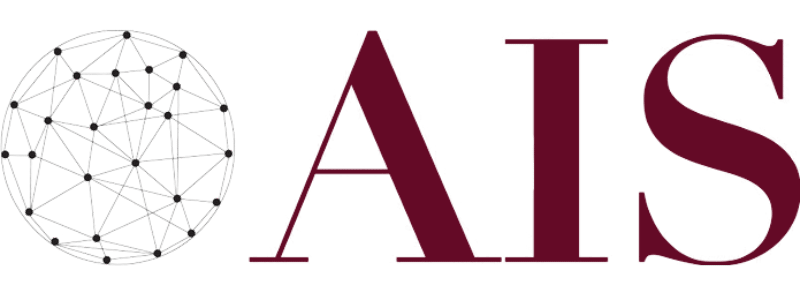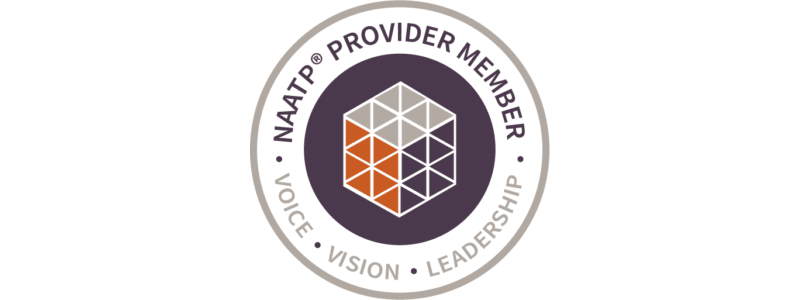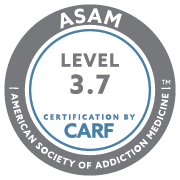Many people find themselves suffering from addictions to substances without even realizing it. This is often the case with those who use prescription medications that have addictive qualities. In many situations, individuals develop depressant addiction problems after using depressant medications for a while. Some may grow to depend heavily on depressants such as benzos, sleeping pills, and even the legal substance alcohol. Fortunately, New Directions for Women is here to help women who suffer from depressant addiction.
What are Depressant Drugs?

Have you found yourself asking the question, “What is a depressant?” If so, this will act as a guide for explaining depressant addiction, central nervous system depressants, and examples of depressant drugs. It is important to understand how central nervous system (CNS) depressant drugs affect those who use them. The three major types of CNS depressant drugs are tranquilizers, hypnotics, and sedatives.
Central nervous system (CNS) depressants are drugs that slow down an individual’s brain activity, making them more effective for treating several conditions. These types of drugs can operate by affecting the neurotransmitter gamma-aminobutyric acid (GABA) which can lead to the following:
- Decreased inhibition
- Drowsiness
- Relaxation
Central nervous system depressants are utilized to treat several different disorders, including:
- Sleep disorders
- Panic attacks
- Insomnia
- Seizures
- Anxiety
- Pain
Examples of depressant drugs that are classified as CNS depressant drugs include:
- Various sleeping pills
- Benzodiazepines
- Barbiturates
- Alcohol
- Opioids
There are various classes of CNS depressant drugs that work in several ways, but all acquire the ability to reduce activity in an individual’s central nervous system and also lower the awareness in the brain levels. Even though CNS depressant drugs all share the same ability, there are still remarkable differences among substances within this drug class. To be specific, some examples of depressant drugs are typically considered to be safer and prescribed more than others.
Nonetheless, it’s crucial to note that almost all depressants can be potent. Therefore, they should only be utilized as prescribed. Central nervous system depressants are called tranquilizers and sedatives sometimes, even though these terms are more applied properly to particular categories of examples of depressant drugs.
Depressant Drug Addiction
Alcohol
Barbiturates
Benzodiazepines
Sleeping Pills
Opioids
Depressant Addiction Withdrawals
Memory Issues
Muscular Pain
Nausea / Vomiting
Excessive Sweating
Heart Palpitations
Types of Depressant Drugs
Alcohol
One of the most widely utilized drugs in the world is alcohol. The extent of how deeply an individual’s brain is affected by this central nervous system depressant is dependent on how much a person drinks and how quickly. Due to the initial constructive behavioral effects of alcohol, several individuals haven’t realized that the substance is a CNS depressant.
For example, when a person first decides to drink, they may feel more relaxed and less reserved at first due to the chemical changes that alcohol causes within a person’s brain. However, the more a person drinks, the more their brain will be affected. The greater the likelihood that an emotional and negative response will take over the person’s life.
Alcohol can increase stress and anxiety rather than reduce it, therefore eliciting negative reactions in a person such as depression, aggression, or anger. Chronic alcohol use can lead to the following when an individual attempts to stop engaging in drug use:
- Withdrawal symptoms
- Dependence
- Addiction
Barbiturates
Barbiturates are also known as “downers” are a type of CNS depressant drugs that are prescribed to treat the following conditions in individuals:
- Sleep disorders
- Tension
- Anxiety
The most common barbiturates include:
- Luminal (Phenobarbital)
- Nembutal
- Seconal
- Mebaral
- Amytal
Previously, barbiturates were regarded as a typical safe depressant but had issues with addiction, overdose, and abuse rapidly became apparent after a widespread prescription. These types of drugs can generate a sense of relaxation and euphoria, even when they’re taken in small doses. In turn, this encourages abuse in some individuals.
Barbiturates have also been proven to have a dramatic impact on individual sleep patterns. Therefore results in repressed REM sleep. In response to specific high abuse rates ranging from the 1950s to the 1970s, benzodiazepines, which are typically regarded as less likely to cause overdose, and less addictive, were popularized and developed. The potential for overdose and addiction is so high that drugs are no longer commonly used to treat sleep problems or anxiety.
Benzodiazepines
Benzodiazepines are sometimes called “benzos”. They are central nervous system depressants that are prescribed to treat the following conditions:
- Acute stress reactions
- Sleep disorders
- Convulsions
- Anxiety
The most common benzos include:
- Ativan
- Xanax
- Valium
Benzodiazepines are highly effective in treating insomnia and anxiety due to their sedative, sleep-inducing, and muscle-relaxing properties. While benzos are considered to be a safe drug for short-term treatment, illicit or long-term use can lead to the development of withdrawal symptoms, addiction, or tolerance upon rapid reduction or cessation in use.
Sleeping Pills
This CNS depressant drugs category includes non-benzodiazepines sleep aids, which are also known as “z-drugs” such as Sonata, Lunesta, and Ambien. These specific drugs are particularly used to treat insomnia along with many other sleeping disorders. They are considered to be chemically different from various other central nervous system depressants.
These CNS depressant drugs work by stimulating the GABA neurotransmitter differently. Unlike benzodiazepines, sleeping medications are not known for reducing anxiety. These CNS depressant drugs have a decreased risk of addiction and fewer side effects compared to benzos. However, long-term use can still result in addiction and dependence.
Opioids
Opioids are the most commonly prescribed pain medications in the United States and much of the world. There are some opioids such as methadone that are utilized for other purposes such as opioid addiction treatment. Several different opioids are available including prescription medications such as Hydrocodone and Codeine, and even illegal street drugs like heroin.
Even though opioids typically vary in strength, addictive potential, along with various other aspects tremendously, they also tend to be extremely similar chemically, and generally have similar effects. Opioids are considered to be extremely effective for treating an individual’s pain. However, they are also some of the most dangerous and addictive drugs in the world. Each year, opioid overdose takes the lives of many Americans.
What are the Effects of Central Nervous System Depressants?
Central nervous system depressants work by increasing the neurotransmitter GABA production. In turn, this slows down a person’s brain activity and produces the following symptoms:
- Slowed breathing and pulse
- Disorientation and confusion
- Slowed pulse and breathing
- Lowered blood pressure
- Euphoria and relaxation
- Difficulty concentrating
- Sleepiness or fatigue
- Slowed reaction time
- Reduced inhibitions
- Loss of coordination
- Impaired judgment
- Difficulty urinating
- Dilated pupils
- Slurred speech
- Memory loss
- Blacking out
- Dizziness
- Relaxation
Long-Term Use of CNS Depressant Drugs
- Sleep and breathing difficulties
- Physical dependence
- Sexual dysfunction
- Suicidal thoughts
- Chronic fatigue
- Weight gain
- Hypersomnia
- Depression
- Addiction
When an individual engages in long-term use of CNS depressant drugs, it can result in various negative effects. All of the factors depend on the type of depressant the person uses, and the severity of the misuse of the particular drug. Individuals who engage in CNS depressant drugs specifically might develop more of a tolerance and require an increased dosage to maintain desired effects.
Another known possible side effect of CNS depressant drugs is an overdose. When there is excessive consumption of depressants, it can lead to respiratory depression, seizures, or even death.
It’s important to note that depressants should not be combined with any substance or medication that would cause sedation including any of the following:
- Certain over-the-counter allergy medications
- Prescription pain medications
- Alcohol
If the above-mentioned three drugs are combined, they have the power to slow down breathing, respiration, and heart rate which can present to be deadly. The risk is also worsened if CNS depressant drugs are utilized to counteract the effects of stimulant drugs such as Adderall and Cocaine. It’s important to note that it is extremely alarming to combine several CNS depressants.
What are Signs of CNS Depressant Addiction and Abuse?
The leading telltale sign of CNS depressant abuse is when a person begins taking the drugs outside the doctor’s prescribed guidelines or medical direction. There are numerous examples of this that include an individual taking higher doses to intensify intoxication and taking another person’s prescription. Other warning signs might include:
- Withdrawal symptoms when not using depressants
- Decreased work productivity or social activity
- Failing in attempts to stop using drugs
- Abnormal or secretive behavior
- Periods of apathy or depression
- Lack of motivation or energy
- Mood swings
Another telltale sign of abuse is when an individual mixes CNS depressants with various other drugs including alcohol or opioids to increase their effects. This can lead to adverse and severe health reactions along with possibly life-threatening consequences.
Central Nervous System Depressant Withdrawal
When an individual discontinues CNS depressant use, it can lead to withdrawal. Due to the way that CNS depressant drugs affect an individual’s brain activity and ultimately slow it down, the withdrawal process can be sudden and severe when a person stops taking them. The withdrawal symptoms for the many examples of depressant drugs typically begin 12 to 24 hours after the last dose of the drug.
Withdrawal symptoms are the most severe between 24 to 72 hours after the last dose. Generally, they begin to fade after the acute withdrawal, otherwise known as the initial period. Some symptoms however are known as post-acute withdrawal symptoms (PAWS), and they may last up to 24 hours.
 In addition, several individuals are going through barbiturate or benzodiazepine withdrawal and might experience what’s known as a rebound effect in which the condition the person was originally taking the sedative for will interfere in their life even stronger than before. For example, if an individual was taking Xanax for anxiety will typically experience worsened anxiety upon the termination of the drug. The most common central nervous system depressant withdrawal symptoms are the following:
In addition, several individuals are going through barbiturate or benzodiazepine withdrawal and might experience what’s known as a rebound effect in which the condition the person was originally taking the sedative for will interfere in their life even stronger than before. For example, if an individual was taking Xanax for anxiety will typically experience worsened anxiety upon the termination of the drug. The most common central nervous system depressant withdrawal symptoms are the following:
- Hypersensitivity to sound and light
- Increased pulse and blood pressure
- Muscular pain or stiffness
- Nausea and vomiting
- Excessive sweating
- Perception changes
- Heart palpitations
- Aches and pains
- Memory issues
- Body tremors
- Hallucinations
- Panic attacks
- Restlessness
- Weakness
- Depression
- Shaking
- Seizures
- Tension
- Irritability
- Anxiety
It’s important to note that withdrawal from CNS depressant drugs can have extremely dangerous complications. These risks are magnified when a person quits drug use on their own or tries to stop using “cold turkey”. Note that the safest way to withdraw from CNS depressant drugs is through a medically-assisted detox program. Physicians can gradually decrease drug use and prescribe the person any medication to assist with bothersome withdrawal symptoms.
What are the Treatment and Therapy Options for CNS Depressant Addiction?
When seeking out treatment for CNS depressant addiction, it’s essential to note that it’ll begin with detox to allow the drugs to exit the person’s system. This will take place either in a medical facility or rehab program. After detoxification is completed, a client will generally move on to an outpatient treatment program or residential inpatient program.
It’s super common for drug abuse to co-occur with various other psychological issues such as depression. Therefore, rehab is the ideal place for individuals to afford and be allowed to address their issues with licensed professionals. Treatment facilities have been known to tailor the individual treatment plan and include various therapies.
Cognitive-behavioral therapy (CBT) is specifically helpful for individuals being treated for depressant abuse because it helps clients replace their negative behaviors with healthier ones. CBT focuses on altering a client’s expectations, behaviors, and thinking while simultaneously increasing their coping skills for dealing with various life stressors. Next time, you ask yourself, “What is a depressant?” Remember there are various examples of depressant drugs you can ask your treatment facility about to help you on the road to recovery.
Addiction Freedom Awaits at New Directions for Women
Unfortunately, depressant addiction exists, but the great news is there is hope. No matter how long you have been struggling with any of the examples of depressant drugs listed here, freedom awaits you. First, accept the issue and then make honest efforts to get help. A healthier lifestyle is possible. Contact us now to begin your journey to recovery










